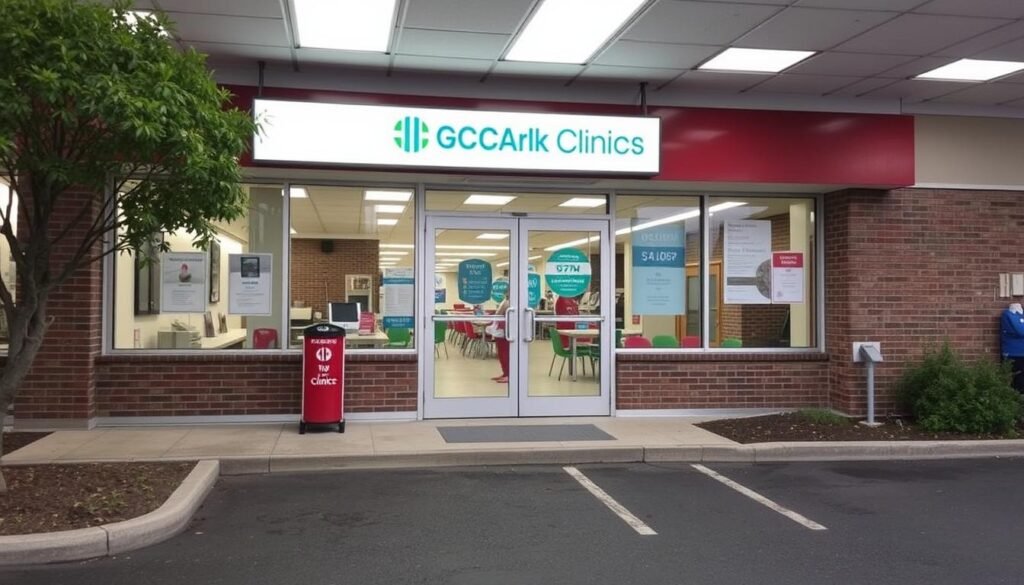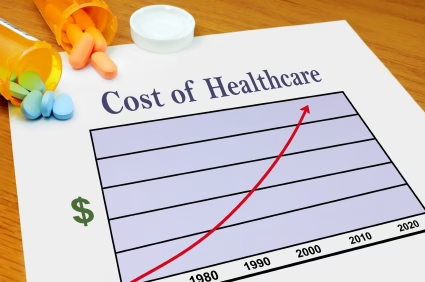A recent estimate suggests that a 65-year-old individual may need $165,000 in after-tax savings to cover health care expenses, according to the 2024 Fidelity Retiree Health Care Cost Estimate. This staggering figure underscores the importance of managing healthcare expenses effectively.
As healthcare costs continue to rise, it’s crucial to explore strategies that can help reduce these expenses. By optimizing your health insurance, leveraging preventive care, and making informed consumer choices, you can significantly lower your out-of-pocket expenses.
Key Takeaways
- Understand the importance of managing healthcare expenses for financial health.
- Learn strategies to reduce healthcare costs through insurance optimization.
- Discover how preventive care can lower your healthcare expenses.
- Make informed choices to maximize the value of your healthcare dollars.
- Explore often-overlooked savings opportunities within the healthcare system.
Understanding the Rising Cost of Healthcare in America
Healthcare expenses in the United States continue to escalate, outpacing general inflation and straining financial resources. This trend has significant implications for individuals, families, and the broader economy.
The persistent rise in healthcare costs can be attributed to several key factors. Advanced medical technologies, while improving patient outcomes, contribute to increased expenses. Pharmaceutical pricing strategies also play a role, as do administrative complexities within the healthcare system. Furthermore, an aging population requires more intensive care, driving up costs.
Why Healthcare Costs Continue to Increase
Multiple factors drive the rising costs of healthcare. These include:
- Advanced medical technologies and treatments
- Pharmaceutical pricing and research costs
- Administrative complexity and overhead
- An aging population with increased care needs
As a result, healthcare expenses now represent a significant portion of household budgets. Many families spend over 10% of their income on medical costs, according to recent data.
| Factor | Impact on Healthcare Costs |
|---|---|
| Advanced Medical Technologies | Increased expenses due to innovation |
| Pharmaceutical Pricing | High costs of drugs and treatments |
| Administrative Complexity | Increased overhead and bureaucracy |
The Impact of Healthcare Expenses on Retirement Planning
Healthcare costs have a profound impact on retirement planning. Medicare covers approximately 80% of healthcare expenses for seniors, leaving individuals to cover the remaining 20%. This can significantly affect retirement savings and lifestyle expectations.
“Healthcare costs are a critical component of retirement planning. Understanding these expenses is essential for ensuring a secure financial future.”
Proper planning for healthcare costs requires understanding both current expenses and projecting future needs based on family health history and longevity expectations.
Optimizing Your Health Insurance Coverage
Optimizing your health insurance coverage is crucial for managing healthcare costs effectively. By understanding your health insurance options and making informed decisions, you can significantly reduce your healthcare expenses.
Choosing the Right Health Plan for Your Needs
Selecting the optimal health insurance plan requires careful evaluation of your specific healthcare needs, budget constraints, and risk tolerance. When comparing health plans, consider the total potential cost, including premiums, deductibles, copayments, coinsurance, and out-of-pocket maximums, in relation to your typical healthcare utilization patterns.
Taking Advantage of Health Savings Accounts (HSAs)
If you’re still working and your employer offers an HSA-eligible health plan, consider enrolling and contributing to a Health Savings Account (HSA). An HSA can help you save tax-efficiently for healthcare costs in retirement. You can save pretax dollars, which have the potential to grow and be withdrawn tax-free for qualified medical expenses.

Understanding Medicare Options When You Turn 65
For those approaching age 65, understanding Medicare’s various components, including Parts A, B, D, Medicare Advantage, and Medigap policies, is crucial for making informed coverage decisions. Medicare enrollment timing is critical, as delayed enrollment in Parts B and D can result in permanent premium penalties.

By optimizing your health insurance coverage and taking advantage of tax-advantaged accounts like HSAs, you can better manage your healthcare costs and ensure financial stability.
Smart Strategies for Everyday Healthcare Savings
Managing healthcare expenses requires a combination of smart strategies and informed decision-making. By being proactive and taking advantage of available resources, you can significantly reduce your out-of-pocket costs and make healthcare more affordable.
Staying In-Network to Reduce Out-of-Pocket Costs
Using healthcare providers within your insurance network can lead to substantial savings. When you see a doctor or visit a hospital that’s part of your plan’s network, you can save on your out-of-pocket costs. In fact, utilizing in-network healthcare providers can reduce your expenses by 30-50% compared to out-of-network care for the same services.
Prioritizing Preventive Care Services
Preventive care is not only beneficial for your health, but it can also help you save money. Most insurance plans cover preventive care services at 100% with no cost-sharing, making regular check-ups, screenings, and immunizations both medically beneficial and financially advantageous. By staying on top of your preventive care, you can detect or prevent serious diseases and avoid more costly treatments down the line.
Using Telehealth and Virtual Care Options
Telehealth and virtual care options are becoming increasingly popular, and for good reason. They typically cost 40-60% less than in-person visits for routine care and minor conditions, while offering greater convenience and accessibility. With virtual care, you can connect with board-certified medical providers and licensed therapists online using a phone, tablet, or computer 24/7.
Comparing Costs Before Procedures and Tests
Before scheduling procedures, diagnostic tests, or imaging studies, it’s essential to compare costs across different facilities. You may be surprised at the substantial price variations for identical services, sometimes differing by thousands of dollars. Many insurers offer cost comparison tools that allow you to research prices for specific procedures at different facilities within your network, empowering you to make cost-effective choices.
By implementing these smart strategies, you can take control of your healthcare expenses and make significant savings. Remember to always look for ways to reduce your out-of-pocket costs, prioritize preventive care, and take advantage of telehealth and virtual care options.
Choosing the Right Care Setting to Save Money
Making informed decisions about where to seek medical care can significantly impact your healthcare expenses. By understanding the different care settings available, you can receive the necessary treatment while minimizing costs.
When to Use Convenience Care Clinics
Convenience care clinics, often located in retail stores and pharmacies, offer a cost-effective alternative for treating minor conditions such as sinus infections, rashes, and earaches. These clinics typically charge 30-50% less than primary care offices. You can find

Urgent Care Centers vs. Emergency Rooms
For non-life-threatening conditions, urgent care centers provide a more affordable option compared to emergency rooms, with average visits costing $150-200 versus $1,500-2,000 for ER treatment.
Free Nurse Hotlines and Consultation Services
Many insurance plans offer free 24/7 nurse hotlines that can guide you on whether your condition requires immediate attention or can be managed through self-care or a scheduled appointment. Some employers and insurance plans also offer telemedicine consultation services to help direct you to the most appropriate care setting.
By choosing the right care setting based on your medical needs, you can significantly reduce healthcare costs. Building a relationship with a primary care provider who offers same-day sick appointments can also help avoid unnecessary visits to urgent care centers or emergency rooms.
Tips for Saving on Healthcare Costs in Retirement
As you approach retirement, it’s essential to plan for healthcare expenses to ensure a financially secure future. Healthcare costs can be a significant burden for retirees, with the average 65-year-old couple potentially needing over $300,000 for healthcare expenses throughout retirement, excluding long-term care costs.
Planning for Healthcare Expenses Before Retirement
Planning for healthcare expenses should begin well before retirement, ideally 10-15 years prior, to allow adequate time for building dedicated healthcare savings. This allows you to make informed decisions about your healthcare coverage and create a sustainable plan for managing expenses.
Medicare Enrollment Strategies to Avoid Penalties
Understanding Medicare’s enrollment periods is crucial to avoid permanent premium penalties. When you turn 65, you’ll want to sign up for Medicare during your 7-month initial enrollment period, which begins 3 months before the month you turn 65. Missing this window can result in penalties of 10% per year for Part B and additional penalties for Part D.
Maximizing Tax-Advantaged Accounts for Healthcare
Health Savings Accounts (HSAs) offer exceptional benefits for retirement healthcare planning. By maximizing HSA contributions during your working years, you can build a substantial healthcare fund for retirement. For 2024, the contribution limits are $4,150 for individuals and $8,300 for families, with an additional $1,000 catch-up contribution for those 55+. These funds can grow tax-free for decades and be withdrawn tax-free for qualified medical expenses at any age.
By planning ahead, understanding Medicare enrollment, and maximizing tax-advantaged accounts, you can significantly reduce your healthcare costs in retirement. It’s also essential to consider other expenses, such as dental, vision, and hearing care, which are not covered by traditional Medicare. Coordinating retirement timing with healthcare coverage availability is also crucial, as retiring before age 65 requires securing bridge coverage until Medicare eligibility.
Conclusion: Taking Control of Your Healthcare Spending
As healthcare costs continue to rise, adopting a proactive strategy is essential to manage your healthcare expenses effectively. By combining informed insurance decisions, strategic use of tax-advantaged accounts like HSAs, and smart consumer behaviors, you can significantly reduce your healthcare costs. Start by evaluating your current healthcare spending patterns to identify areas for immediate savings through in-network care and preventive services.
Developing a long-term healthcare financial plan that incorporates HSA contributions and appropriate insurance coverage for your life stage is crucial. Regularly reassess your strategy, especially during employment changes or as you approach Medicare eligibility. Take advantage of employer-sponsored wellness programs and consider consulting a financial advisor specializing in healthcare planning to maximize your benefits and minimize costs.
By applying these principles consistently, you can achieve quality healthcare while protecting your financial wellbeing throughout all life stages.
FAQ
What is a Health Savings Account (HSA) and how does it work?
A Health Savings Account (HSA) is a tax-advantaged savings account that allows you to set aside money for medical expenses. You can contribute to an HSA if you have a high-deductible health plan, and the funds can be used to pay for qualified medical expenses, such as doctor visits, prescriptions, and hospital stays.
How can I reduce my out-of-pocket healthcare costs?
To reduce your out-of-pocket healthcare costs, you can stay in-network, choose a health plan with a lower deductible, and take advantage of preventive care services, which are often covered at no cost to you. You can also consider using telehealth services and comparing costs before procedures and tests.
What are the benefits of using a Health Savings Account (HSA) for healthcare expenses?
The benefits of using an HSA include tax advantages, flexibility to use the funds for qualified medical expenses, and the ability to save for future healthcare costs. Contributions to an HSA are tax-deductible, and the funds grow tax-free.
How do I choose the right health plan for my needs?
To choose the right health plan, consider your healthcare needs, budget, and provider network. You should also review the plan’s deductible, copays, and coinsurance, as well as any additional benefits, such as dental and vision coverage.
What are some strategies for saving on healthcare costs in retirement?
To save on healthcare costs in retirement, you can plan ahead by maximizing tax-advantaged accounts, such as HSAs, and consider Medicare enrollment strategies to avoid penalties. You can also take advantage of preventive care services and use cost-effective care settings, such as convenience care clinics.
Can I use my Health Savings Account (HSA) to pay for healthcare expenses in retirement?
Yes, you can use your HSA to pay for qualified medical expenses in retirement. HSAs are not subject to required minimum distributions (RMDs), so you can keep the funds in the account for as long as you need them.
How can I compare costs before procedures and tests?
To compare costs, you can ask your healthcare provider about the costs of procedures and tests, and check with your insurance company to determine what is covered. You can also use online resources, such as cost comparison tools, to research prices for healthcare services in your area.




